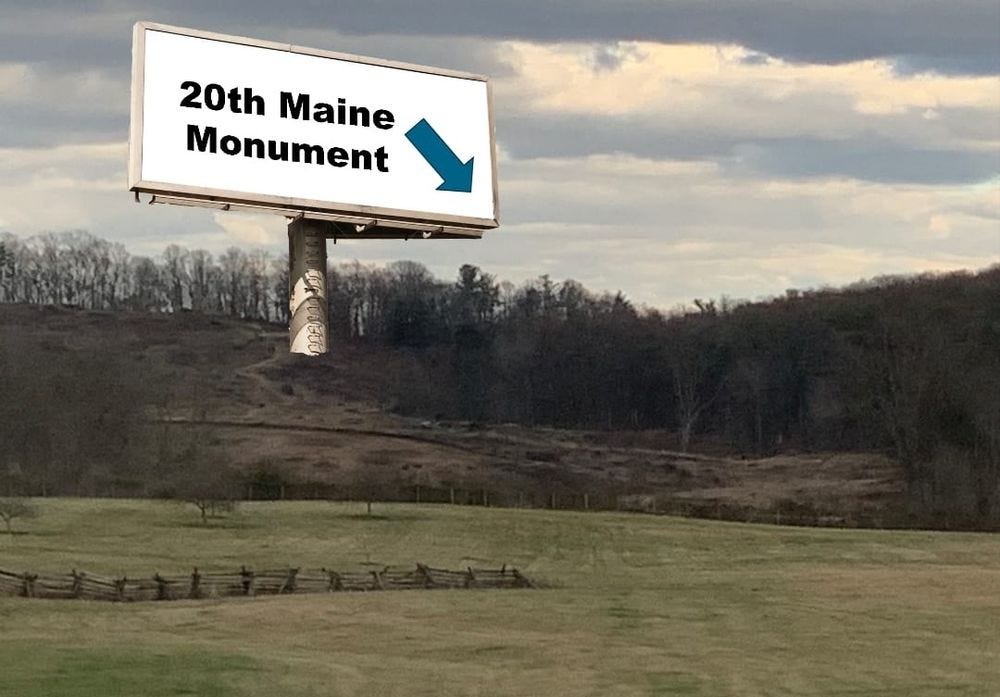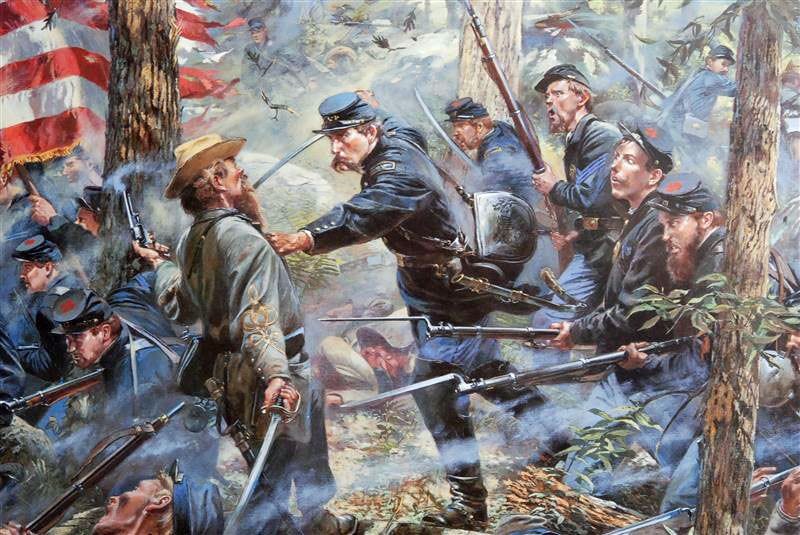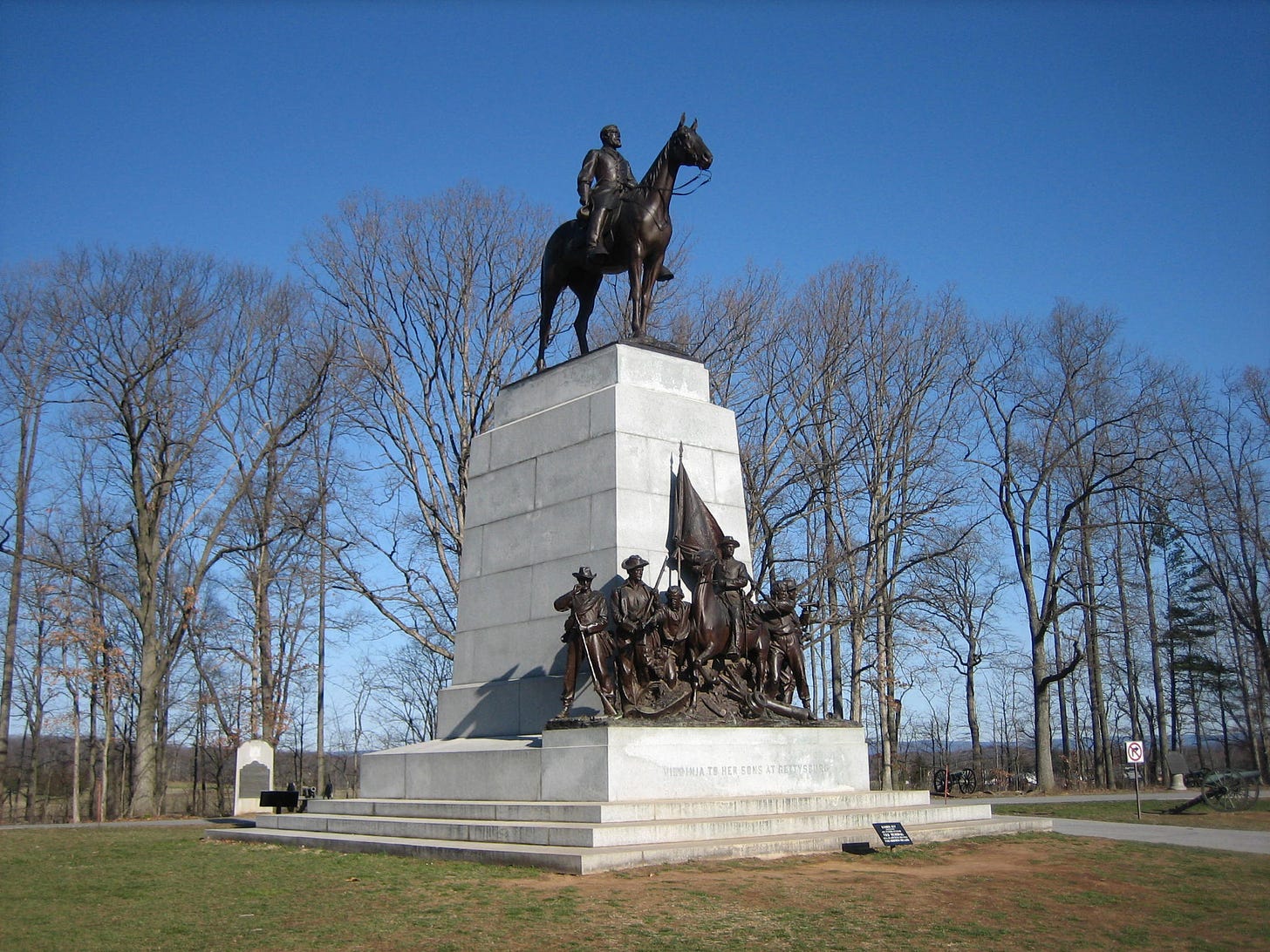No one ever just walks the Gettysburg battlefield. Whether they are aware of it or not, visitors bring a good deal of cultural baggage with them that shapes where they visit and spend the most time, who they think about and don’t think about, and the lessons learned.
I couldn’t help but think about this over the past few days. In addition to it being the 161st anniversary of the famous battle, one of the most popular sites, Little Round Top, has reopened after two years of restoration. The closing of the site speaks volumes about its popularity in recent decades.
Would a restoration have been necessary had Michael Shaara never published The Killer Angels in 1974 or Ron Maxwell’s movie Gettysburg never been released in 1993?
What if the name of Col. Joshua L. Chamberlain and the 20th Maine remained as relatively obscure as the other officers and regiments that defended this key spot on the battlefield on July 2, 1863?
Would a restoration have been necessary? I don’t know, but it’s a reminder that where our vehicles and feet take us has a profound impact on the landscape itself.
If you had visited Gettysburg in the decades after the battle, you likely would have spent much of your time in the area around Cemetery Hill and Culp’s Hill.
Instead of walking the ground of Pickett’s Charge, visitors may have followed the failed charge of the Second Massachusetts and Twenty-Seventh Indiana on July 3, near Spangler’s Spring, against entrenched Confederates. Following their assault, Union soldiers were shot at and killed by Confederates as they attempted to rescue their wounded comrades, who were crying out for help in no-man’s land.
Then there are the monuments that compete for our attention and memory. No monuments have had more of an impact on our memory of the battle than the Confederate monuments that line Seminary Ridge, beginning with that of the Virginia monument dedicated in 1914.
Lee himself sits atop Traveler gazing out along the field trod by North Carolinians and Virginians on this day in 1863.
The location itself is deceptive. Many visitors begin their trek across the famous field from this point even though the soldiers lined up for the assault were located to the left and right of the monument. The area in the immediate front was largely empty.
But the fact that visitors make this march at all points to a deeply ingrained memory of the battle that it was Lee’s to lose. Everything, including the outcome of the battle and even the war itself, hung in the balance as the orders were given to commence the assault. We are all that fourteen year-old boy described by William Faulkner in Intruder in the Dust.
How many visitors gather around the equestrian monument of Gen. George Gordon Meade before investing the same intellectual and emotional energy appreciating the gallant defense of Union defenders along Cemetery Ridge? For that matter, how many visitors can even identify the man on the horse overlooking this part of the battlefield?
There was nothing inevitable about the failure of the Pickett-Pettigrew assault if you understand the decisions made by Union commanders along Cemetery Ridge and the bravery of the men in the ranks.
So, the next time you a visit Gettysburg, take a step back and think about the questions you already have or the specific places you hope to see and ask yourself why. What other places are worth visiting on the battlefield. What other stories are worth exploring and what lessons can be learned?








Well stated Kevin. In my early visits to Gettysburg it seemed only natural to go to those safe and familiar places that many of us are so used to hearing/reading about. However, my last trip 2 years ago involved going to the Bliss farm where only the foundation remains. You can't help but thinking about the poor residents fleeing their home (hopefully), then having it unfortunately being in no man's land, repeatedly contested by both sides until it was finally burned by the (Union) troops sent to protect and/or defend it. Then, I thought about why that part of the battlefield is only preserved a couple hundred feet farther beyond the house and why there is modern housing built on what certainly was part of the battle! I appreciate your posts as it causes me to think beyond the obvious, re-examine what I think I know, and seek out more sources to help improve my knowledge. For that, I thank you!
Thank you for this somber reflection. On our last trip we visited Antietam and Gettysburg. As a recovering Virginia lost causer I didn’t visit the lee statue but did stand where the Pickett-Pettigrew assault began and contemplated how steep it was, how hot the day was, how heavy the wool uniforms were for all combatants. Then we drove to the Meade monument (because we’re old) and I thought of the men in blue, shouting, “Give them Fredericksburg!” and defending that line.
They saved our country and its representative democracy. Will we be able to do as much?